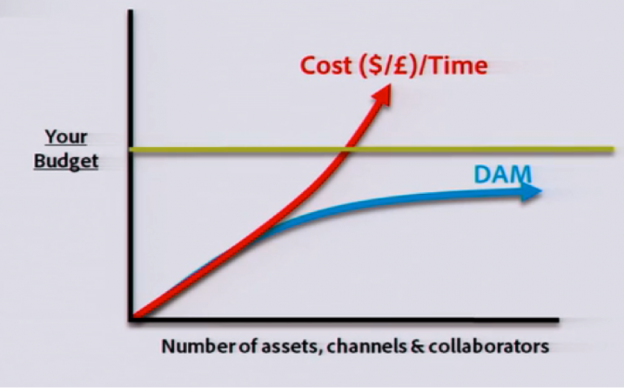Turning digital marketing into digital mindreading
Imagine the pleasant surprise of being offered a discount for a luxurious resort hotel right after viewing a video of the property; or discovering an interactive application that gives options for custom-configuring a car model online and then finds available inventory at a dealer nearby.
Successful digital marketing strategies today require the ability to meet the customer with relevant contextual content, regardless of the channel or device from which they choose to consume it. Customers also expect interactive rich media, including video to entertain and inform their purchasing decisions and resulting satisfaction with those purchases. In order to stay top of mind with their most valuable customers, marketers need to be where their customers are, follow the trends they are following, and anticipate their needs with targeted content.

Trends driving the demand for a shift digital asset management repositories towards digital asset management for customer experience.
As demand for personalised, rich media content across multiple channels continues to grow, inefficiencies in content workflow can begin to surface as tasks are repeated to meet the needs of different segments. This can cause costs to escalate and responsiveness to decline. (See fig. 1 below)

fig. 1 – As the number of assets required continues to grow, costs will rise unless workflow can be automated and assets can be reused in multiple channels.
To overcome inefficiencies, companies are beginning to focus on streamlining workflows such as campaign management and product photography upload and review, as well as automating repetitive tasks, such as digital rights management, metadata and rendition creation.
With a digital asset management system built to support customer experience, organisations can realise cost benefits that allow them to scale to meet their multi-channel objectives, without increasing creative production costs.
DAM is no longer a library focused on cost savings and brand enforcement. Companies are now looking to maximise the value of their assets in multiple external channels, creating the need for a digital asset management system that allows collaboration between creative and marketing professionals, and is focused on the end customer experience. DAM for customer experience enables marketing professionals to manage and rapidly deliver contextual, rich media assets, to all channels.
Here are three best practices to considerto helpturn a DAM cost center into a DAM profit center:
- Understand customers and their content consumption. Who are the most valuable customers, what channels are they using to consume content, and what types of assets does your organisation need to engage them? This will help prioritise the content that will need to becreatedand delivered.
- Ensure business processes help not hinder.Who does the marketing team need to collaborate with to create targeted content? How will the content beorganised? The most agile and responsive organisations have streamlined workflows and cross-organisational approval processes, a clearly defined taxonomy as well as automated metadata management.
- Choose tools and technologies wisely.Can web content managers author and publish content the day it is approved? Does the organisation’s DAM solution include dynamic renditions to support responsive design initiatives, automated video transcoding, and targeted content? Using the right tools can help simplify complexity and reduce the number of asset versions required to meet business objectives.
Digital asset management for customer experience enables organisations to respond quickly to their customers changing needs and continue to engage and delight them.
















